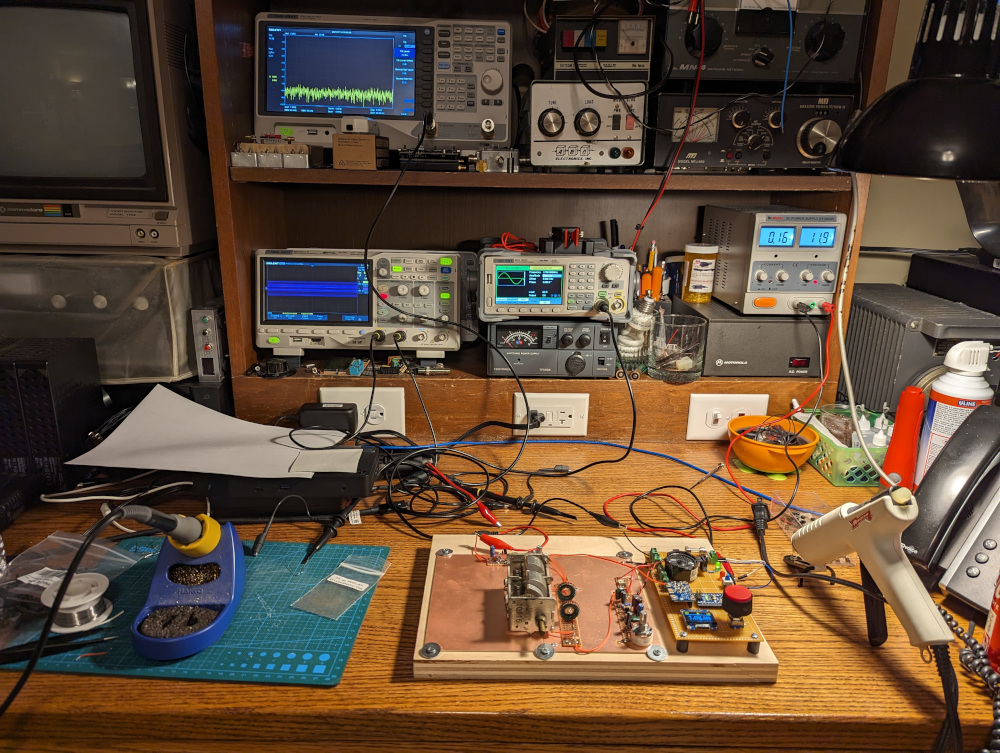80 Meter SSB - Part 1 - Direct Conversion Receiver
I started a new project using my new radio development platform. I’m following along with one of ZL2CTM’s builds, specifically, this one, so if you are looking for a how-to, you would probably be better served watching his videos. This is mostly just a build log for myself.
I’m making this radio for 80 meters and I’m tweaking it a little, mainly due to parts availability in my junk box.
I started out with the audio section. I built up a 2n3904 preamp feeding into an LM386 amplifier. The schematic for the preamp is below. The audio out is mostly flat across the audio spectrum and works well enough for my purposes.

I soldered it to the ground plane using Charlie’s upside down strip board approach.
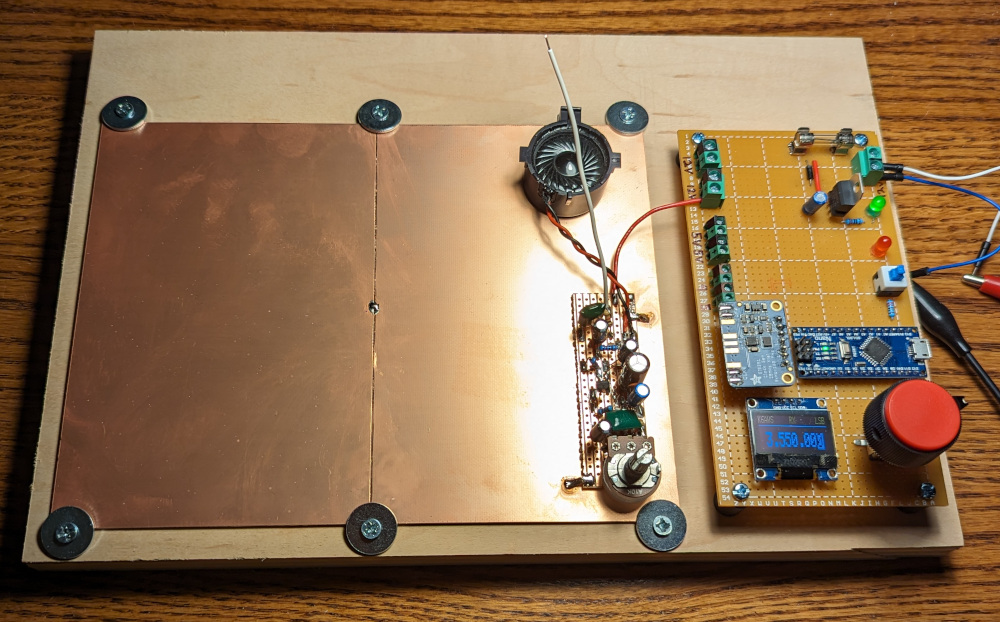
Next, I built the antenna amplifier. There is a 10k pot on the output which allows some adjustment of the gain.

Next comes the band pass filter.

The schematic calls for two inductors that are 8.23uH. Using the toroids.info site, I selected T68-2 toroids and plugged in 8.23uH and the site caluclated 38 turns. I wound the toroids and the inductance measures almost exactly what the site calculated.
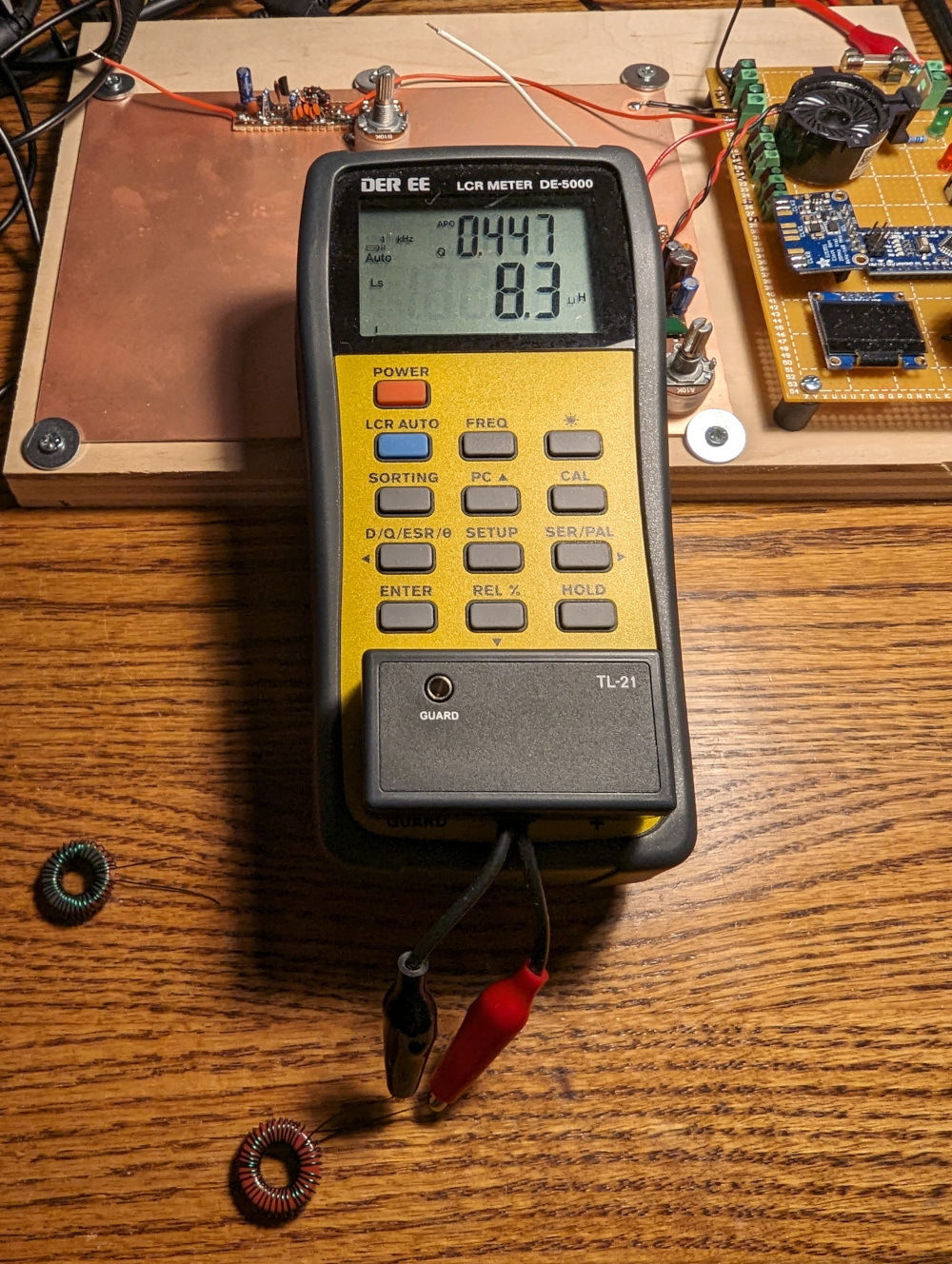
To cover the whole 80 meter band, I followed Charlie’s example and used a variable capacitor in the filter circuit. I recreated Charlie’s schematic in LTSpice and by varying the capacitors in parallel with the inductors, the filter can be pulled up and down the band. To cover the whole band, I only need between 120pF and 150pF. The only variable capacitor I had in the junkbox that met the criteria ranged from about 30pF to 360pF. It was a bit much, but it will work for the moment.
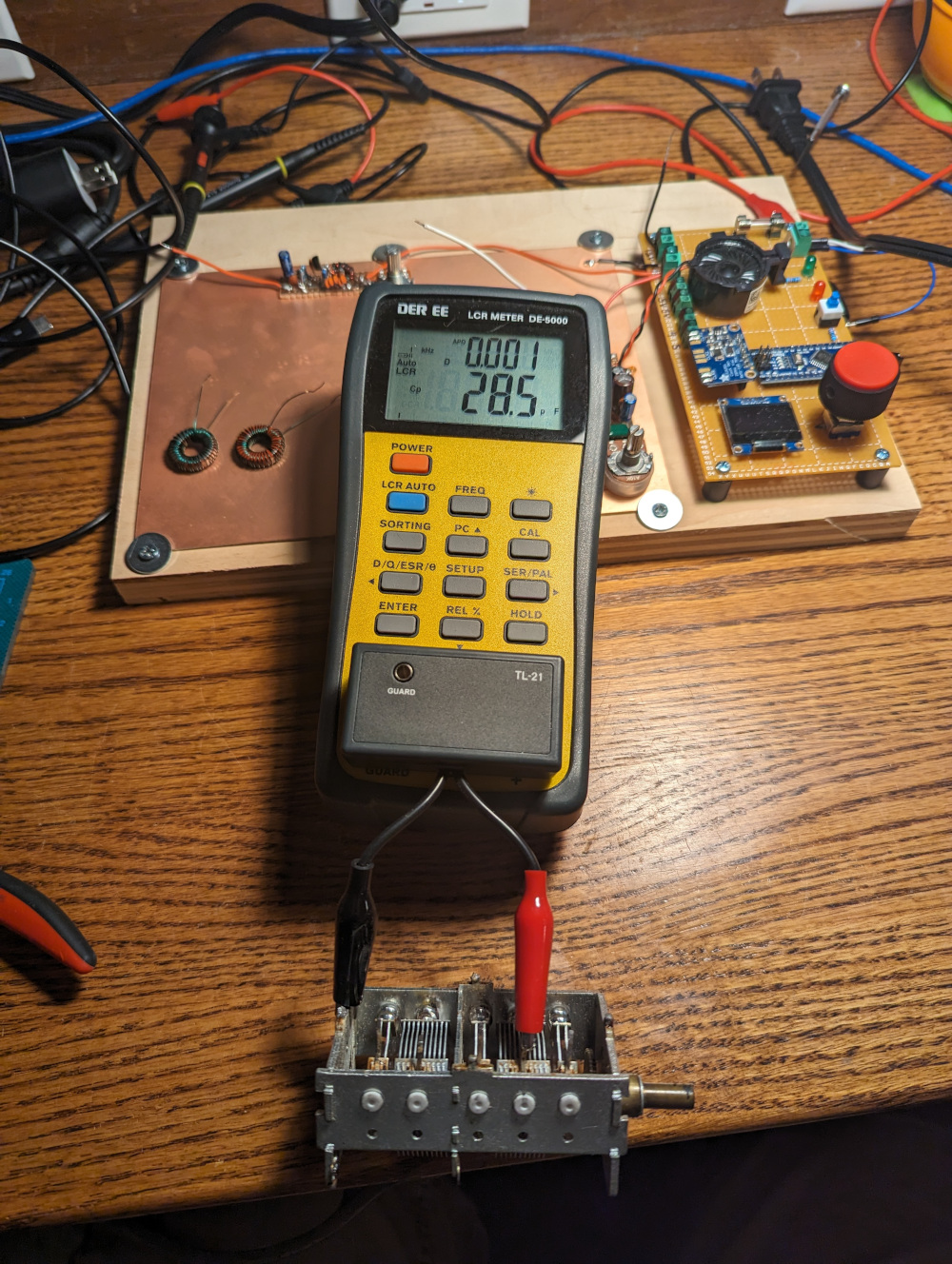
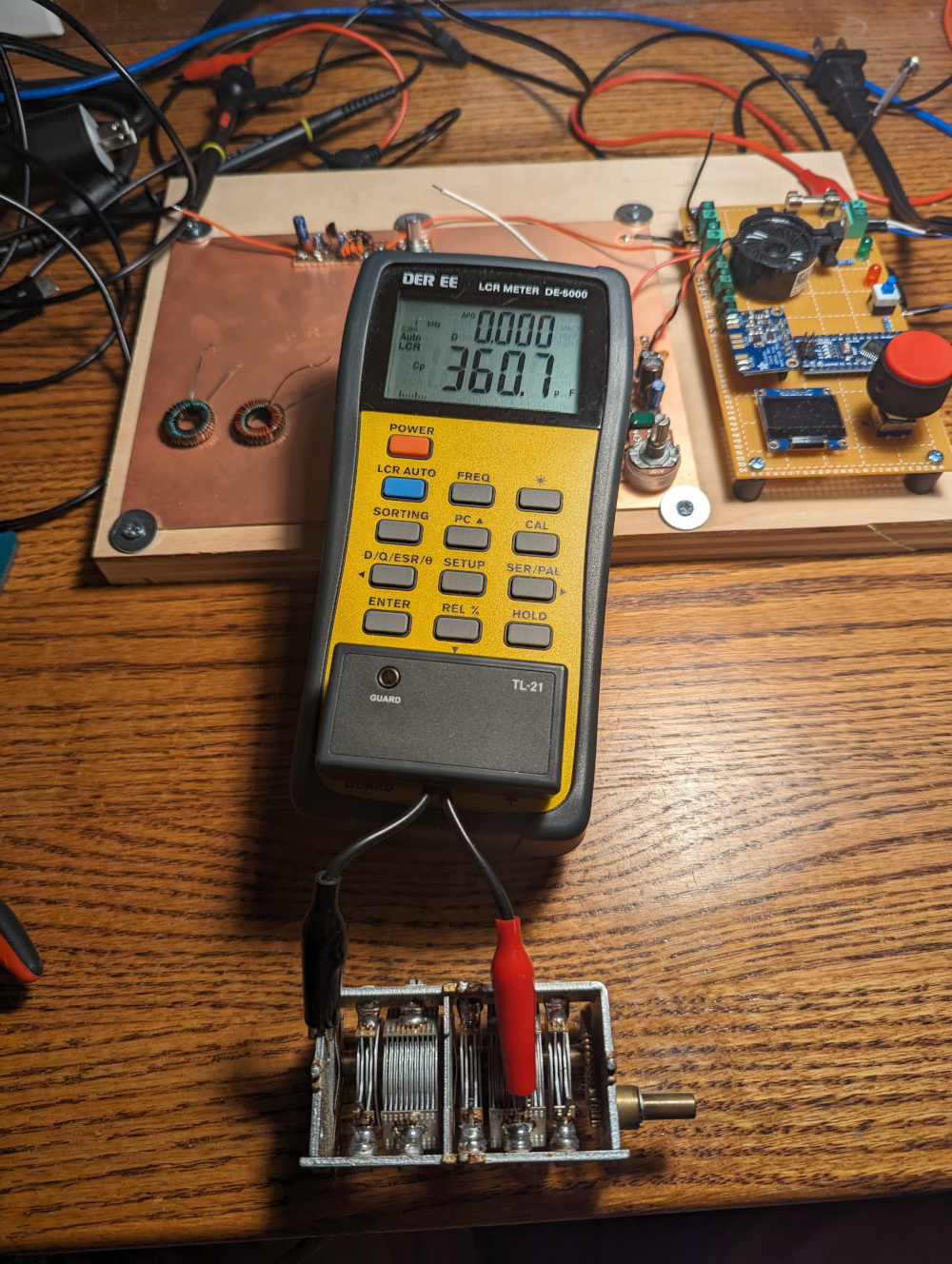
Once I built the filter, I put it on the spectrum analyzer. Below is the filter on the high end of the band.

Here is the filter on the low end.

Next, I added an ADE-1 mixer and hooked everything together and tested it.
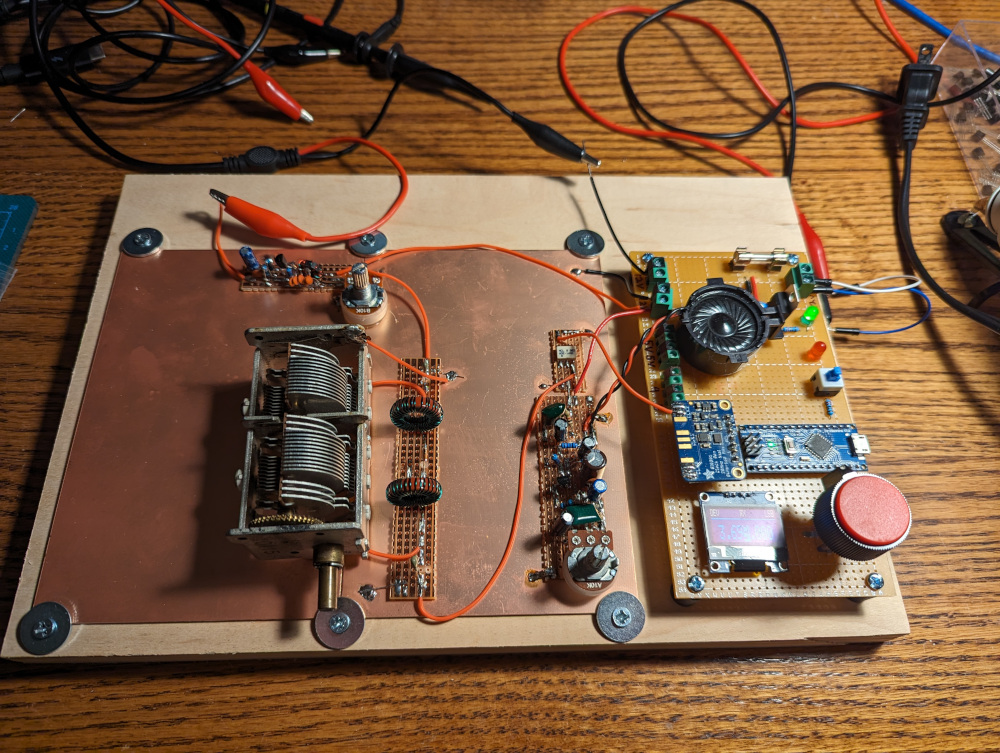
It works pretty well as a direct conversion receiver. There is some noise I’ll need to figure out. It’s probably from the unshielded wire I’m using. Maybe I’ll switch to some small diameter coax, but for now, it’s not terrible.
Next up, I’ll expand this to a superhet configuration. I’ll build out two IF amps, and I’m going to try and use a crystal filter that I pulled from an ebay rf board. I’ll add another ADE-1 mixer and then tweak my code and hopefully, I should hear some signals.
